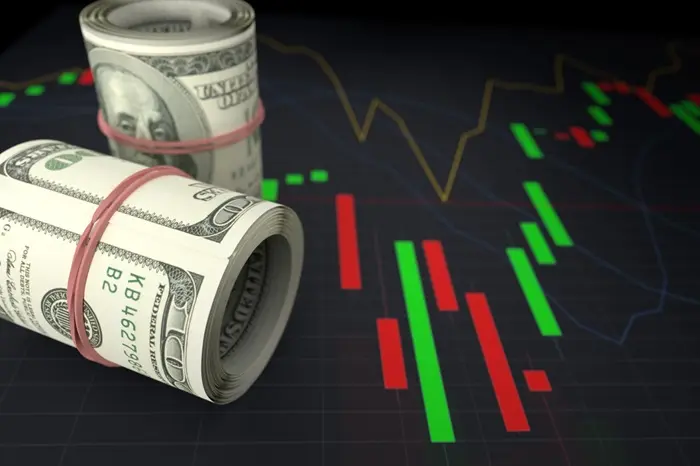In the world of Forex trading, one of the most crucial aspects of risk management is understanding how to calculate the correct lot size for each trade. Lot size directly impacts your potential profit or loss and determines how much you stand to gain or lose per pip movement. Mastering this calculation is essential for successful trading, as it helps manage risk and leverage, ensuring that trades are executed within your risk tolerance. This guide will break down the lot size calculation process, provide step-by-step instructions, and emphasize the importance of proper risk management in Forex trading.
Understanding Forex Lot Size
Before delving into the calculation of lot size, it’s essential to understand what a lot is in the context of Forex trading. A “lot” represents the quantity of the asset you are buying or selling in a trade. In Forex, there are different types of lots:
Standard Lot: This is equal to 100,000 units of the base currency.
Mini Lot: This is equal to 10,000 units of the base currency.
Micro Lot: This is equal to 1,000 units of the base currency.
Choosing the right lot size depends on several factors, including your account size, risk tolerance, and the currency pair you’re trading. The key goal is to select a lot size that aligns with your overall trading strategy and risk management practices.
Why Lot Size Calculation Is Important
The main purpose of calculating lot size correctly is to control the amount of risk on each trade. If you risk too much, you can quickly deplete your account balance with just a few losing trades. On the other hand, if you risk too little, your potential for profit will be limited.
Proper lot size calculation allows you to:
Control your risk exposure: By determining the amount of money you are willing to risk per trade.
Calculate potential profit or loss: Understanding how much each pip movement affects your balance based on your lot size.
Maximize your leverage: Using the right lot size allows you to trade larger positions with a smaller margin, maximizing leverage without increasing risk unnecessarily.
A step-by-step guide to calculating lot size
Now that we understand the importance of lot size, let’s look at the calculation process.
1. Determine your account size
The first step is to understand how much money you have available in your trading account. This amount will help you decide the appropriate amount to risk per trade.
For example, if your trading account balance is $10,000, you will need to calculate your lot size based on your risk tolerance.
2. Determine how much to risk per trade
Risk management is at the heart of any successful Forex strategy. One of the most common risk management rules is to only risk a small portion of your account balance per trade. Typically, you risk between 1% and 3% of your account balance per trade.
Let’s say you are willing to risk 2% of your $10,000 account balance. This means you risk $200 per trade.
3. Determine your stop loss level
A stop loss level is a pre-set price at which you close a position to limit potential losses. The distance between your entry price and your stop loss level will affect your trade lot calculation. For example, if you plan to place your stop loss 50 pips away from your entry price, you will need to adjust your trading lot size so that a 50 pip move results in a $200 loss (depending on your risk tolerance).
4. Calculate the Dollar Value of a Pip
Next, you’ll need to calculate the value of each pip. The value of a pip varies depending on the currency pair and the lot size. For a standard lot in most currency pairs, one pip typically equals $10. For mini lots, it’s $1, and for micro lots, it’s $0.10.
Here’s the basic formula to calculate the pip value for any currency pair:
Pip Value = (1 pip / Exchange Rate) * Lot Size
For example, if you’re trading the EUR/USD pair and the exchange rate is 1.2000, the pip value for a standard lot would be:
Pip Value = (0.0001 / 1.2000) * 100,000 = $8.33
This means each pip movement in a standard lot of EUR/USD would be worth $8.33.
5. Calculate Lot Size Using the Formula
Now that you know your risk per trade, the distance to your stop-loss, and the pip value, you can calculate the appropriate lot size. Use the following formula to determine your lot size:
Lot Size = (Risk Amount / (Stop-Loss in Pips * Pip Value))
Let’s put it into action. Suppose you’re risking $200 on a trade, your stop-loss is 50 pips, and the pip value is $8.33.
Lot Size = ($200 / (50 * $8.33)) = 0.48 standard lots
This means you should trade 0.48 standard lots (48,000 units) to risk $200 on a 50-pip stop-loss.
6. Adjust Lot Size Based on Risk Tolerance
You can adjust your lot size based on your personal risk tolerance. For example, if you feel comfortable with a higher risk per trade, you can increase your lot size. Conversely, if you prefer a more conservative approach, you can decrease your lot size.
Lot Size Calculation in Different Currency Pairs
The lot size calculation remains the same for all currency pairs, but the pip value may differ depending on the pair. Here are some key points to consider:
1. Pairs with USD as the Quote Currency
For pairs like EUR/USD, GBP/USD, or AUD/USD, the pip value is straightforward because USD is the quote currency. The calculation method mentioned earlier applies directly to these pairs.
2. Pairs with JPY as the Quote Currency
For pairs like USD/JPY or EUR/JPY, the pip value needs to be calculated slightly differently. In these pairs, a pip is worth 0.01 instead of 0.0001, so the pip value formula would change accordingly.
For example, for USD/JPY, the pip value for a standard lot would be:
Pip Value = (0.01 / Exchange Rate) * 100,000
3. Cross-Currency Pairs
For cross-currency pairs, where neither currency is the USD (like EUR/GBP or EUR/JPY), you’ll need to convert the pip value into your base currency. This can be done by multiplying the pip value by the exchange rate of the pair relative to the USD or your account currency.
Using a Forex Lot Calculator
If you find manual calculations too complex, there are online Forex lot calculators that can help you determine your ideal lot size. These calculators take into account your account balance, risk percentage, stop loss level, and currency pair to calculate the right lot size.
However, it is important that you understand these calculations yourself, as this will give you a deeper understanding of risk management and how to control your market exposure.
Leverage and Lot Size
Leverage plays an important role in lot size calculations, especially for traders with smaller accounts. Leverage allows you to control larger positions with less margin. For example, if your broker offers 100:1 leverage, you can control a $100,000 position with only $1,000 margin.
However, leverage also increases your risk exposure. It is important to calculate the right lot size based on your available margin and leverage. Even small market movements can lead to significant losses if you use too much leverage, so be careful.
Risk Management and Lot Size
Calculating your lot size is part of a broader risk management strategy. It is important to understand that your lot size determines not only your potential profit, but also your potential loss. The larger the lot size, the higher the risk. Therefore, a careful balance between risk and reward must be struck.
Traders should set stop-loss levels to ensure that even in the worst-case scenario, the integrity of their account balance is not compromised. It is also important to never risk more than you can afford to lose. Follow a risk percentage rule (such as 1% or 2%) to avoid large losses.
Conclusion
Mastering the lot size calculation is an essential skill for every Forex trader. By carefully determining the right lot size, you can control your risk, ensure a balanced trading strategy, and avoid major losses. The ability to accurately calculate your lot size will help you trade with confidence, knowing that your trades are in line with your risk tolerance and overall trading plan.
Always remember that Forex trading is inherently risky, but with proper lot size management, you can reduce your potential losses while maximizing your profit potential. With this knowledge in hand, you can start your forex trading journey with a well-structured and risk-aware mindset.
Related topics:






























